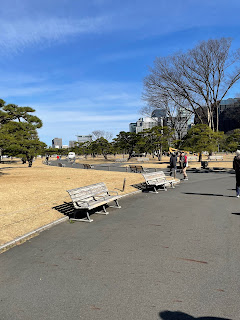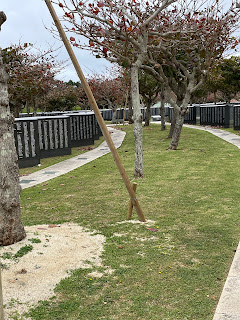Where are we today? Tokyo!

Our first stop was the Imperial Palace, a compound of buildings and gardens built around old castle ruins. The current emporer lives there, along with his family. No, he didn’t invite us in for tea. 😆 The next stop was a Buddhist temple compound. Here is where you buy your fortune. If your fortune is a bad one, you tie it to this rack — I suppose so that some one can pray for better things on your behalf, The air all around and in the buildings was scented with incense. It took me right back to World Bazaar in Atlanta when I was in seventh grade or so. There were many little shrines in the grounds like this one. If a mother loses her first child, she will come to One of these to pray to the Buddha. If it is winter, she will clothe the statue with something warm. This is thanks in return for the prayer, but also demonstrating motherly concern for her late child. The grounds let out in a pedestrian shopping area that spans several streets. We wandered through some shops, and


